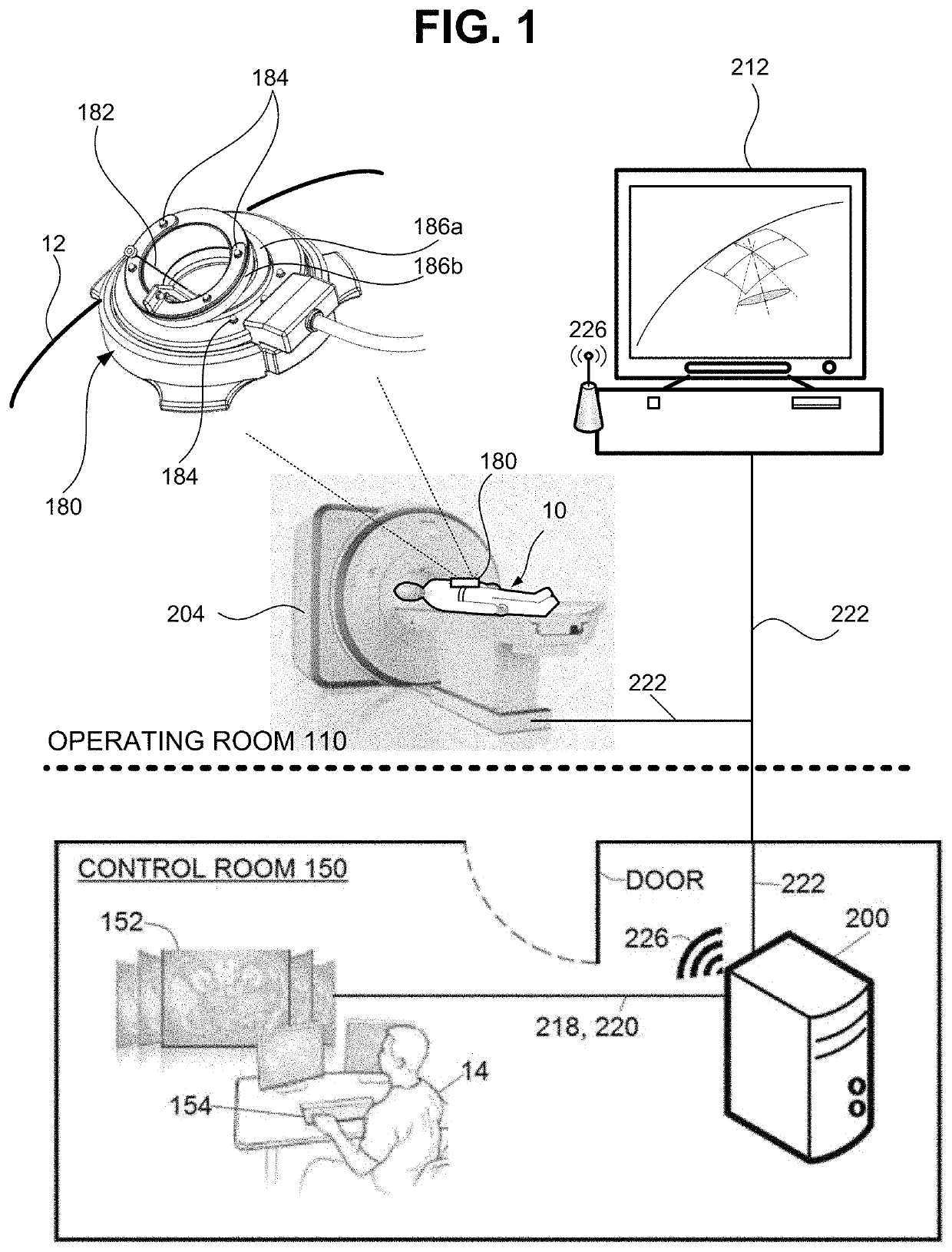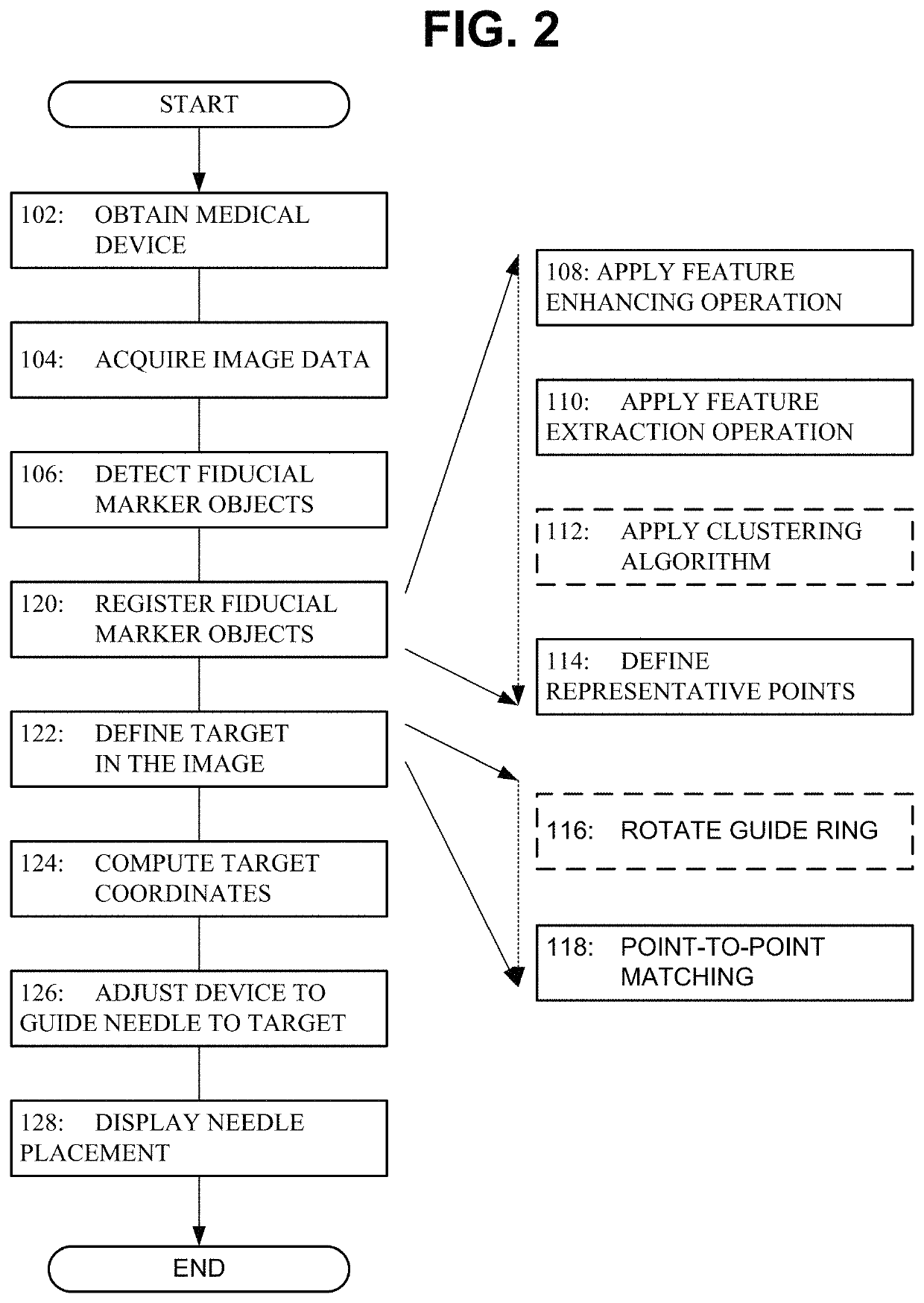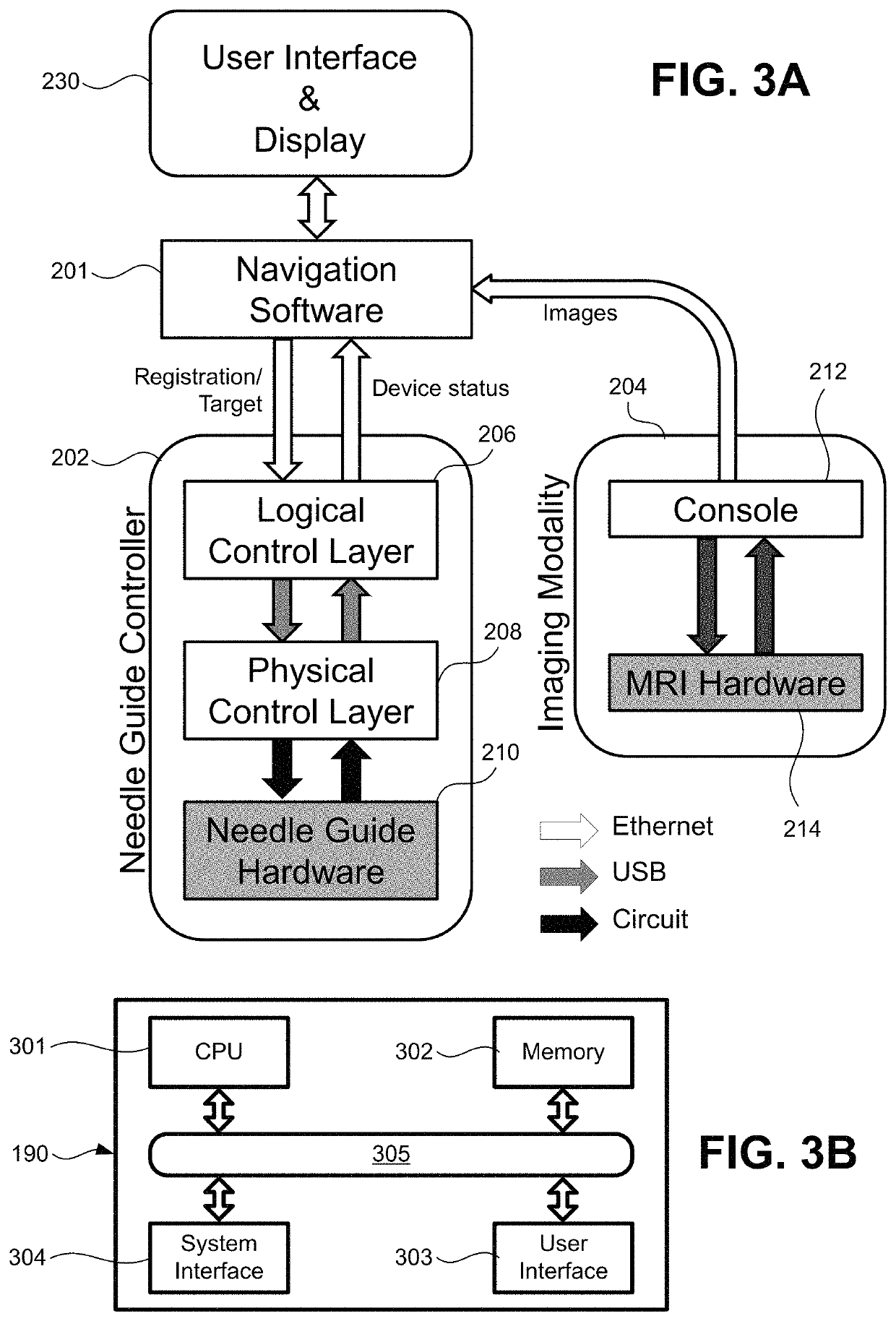Registration and motion compensation for patient-mounted needle guide
a technology of needle guide and registration, which is applied in the field of medical imaging systems, methods and devices, can solve the problems of constant change in the spatial relationship between the device and the target, significant displacement of the device with respect to the target lesion, and internal target position chang
- Summary
- Abstract
- Description
- Claims
- Application Information
AI Technical Summary
Benefits of technology
Problems solved by technology
Method used
Image
Examples
Embodiment Construction
[0008]According to the various embodiments of the invention, there is provided an apparatus and a method of automatic device-to-image registration and re-registration. According to one embodiment, a system was developed for an MRI-compatible patient-mounted needle guide device. The system incorporates a novel device-to-image registration algorithm that allows automatic registration of the device to the patient at every image acquisition, and adjusting the orientation of the needle to compensate for target displacement or displacement of the device due to patient motion. One objective of this disclosure is to estimate targeting accuracy achieved by the patient-mounted needle guide device, and the impact of the motion compensation in a clinical scenario. Of particular interest is the inter-scan motion, which is a displacement of the target location or the guide device relative to the patient between MR image acquisitions. The inter-scan motion can cause a misalignment between the targ...
PUM
 Login to View More
Login to View More Abstract
Description
Claims
Application Information
 Login to View More
Login to View More - R&D
- Intellectual Property
- Life Sciences
- Materials
- Tech Scout
- Unparalleled Data Quality
- Higher Quality Content
- 60% Fewer Hallucinations
Browse by: Latest US Patents, China's latest patents, Technical Efficacy Thesaurus, Application Domain, Technology Topic, Popular Technical Reports.
© 2025 PatSnap. All rights reserved.Legal|Privacy policy|Modern Slavery Act Transparency Statement|Sitemap|About US| Contact US: help@patsnap.com



